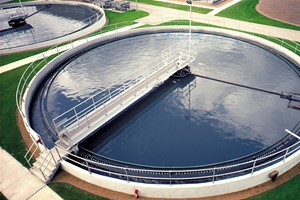The construction industry contributes significantly to a country's economy through infrastructure development. The industry has expanded rapidly worldwide and further growth is expected.
This has contributed to a great deal more construction waste being generated – which has been identified as one of the core problems in the construction industry across the world. The literature suggests that as much as 30% of the material delivered to a construction site ends up as waste.
The increase in waste has been driven by the fact that construction projects are now much more complex. This has made it harder for construction managers to manage waste effectively.
Also, building waste is difficult to recycle and reuse. A lot is contaminated – for example when wet concrete or mortar is dumped on other waste materials.
In South Africa, between 5 million and 8 million tonnes of construction waste is generated annually. Only a small fraction is reused or recycled. The result is that a large amount of waste is disposed of in landfills, which are rapidly reaching capacity in many places.
One way to approach the problem is through the principle of “lean engineering” – a strong focus on minimising waste. To find out whether these principles were being used on construction sites in South Africa, we did research in Gauteng province. The province is the economic hub of the country and region and has the greatest number of construction projects.
We found these principles were not being used widely. But all the construction managers in our study were aware of them and their potential value. This suggests there is scope for improvement in waste management.
Our key finding was that training site workers could make a big difference to waste control and prevention. This is aligned with lean thinking in that it aims to empower people to play a part.
What happens on building sites
For our study, we interviewed ten construction managers sampled randomly from the Construction Industry Development Board list of registered contractors. We limited the selection to medium-sized companies.
Eight themes emerged from the interviews: types of material waste, causes of physical waste, methods to minimise waste, benefits, cost and time implications, application of lean construction, waste management plan, and most effective method to minimise waste.
We found that procurement during construction played a role in the waste generated. Sometimes wrong items were ordered, or there was over-stocking caused by not being able to purchase small quantities, or the wrong materials were delivered.
Frequent variation orders, waiting for replacements, materials that were not in compliance and inaccurate estimation methods also contributed to construction waste.
Concrete and other cementitious materials were most frequently cited, followed by bricks. Plastic and cement bags, formwork and sand were also mentioned.
Participants explained that concrete waste happened when it was poured to an incorrect level, requiring demolition and rework. Ordering more ready-mix concrete also caused waste.
Brick waste on the building sites happened when bricklayers broke the brick in half and did not use the remaining half.
The two most prevalent reasons that were cited for the causes of waste were lack of skill of laborers and subcontractors, and poor supervision. Other reasons included poor material handling, negligence, speed of execution, design changes, poor management and planning, and the normal work process.











